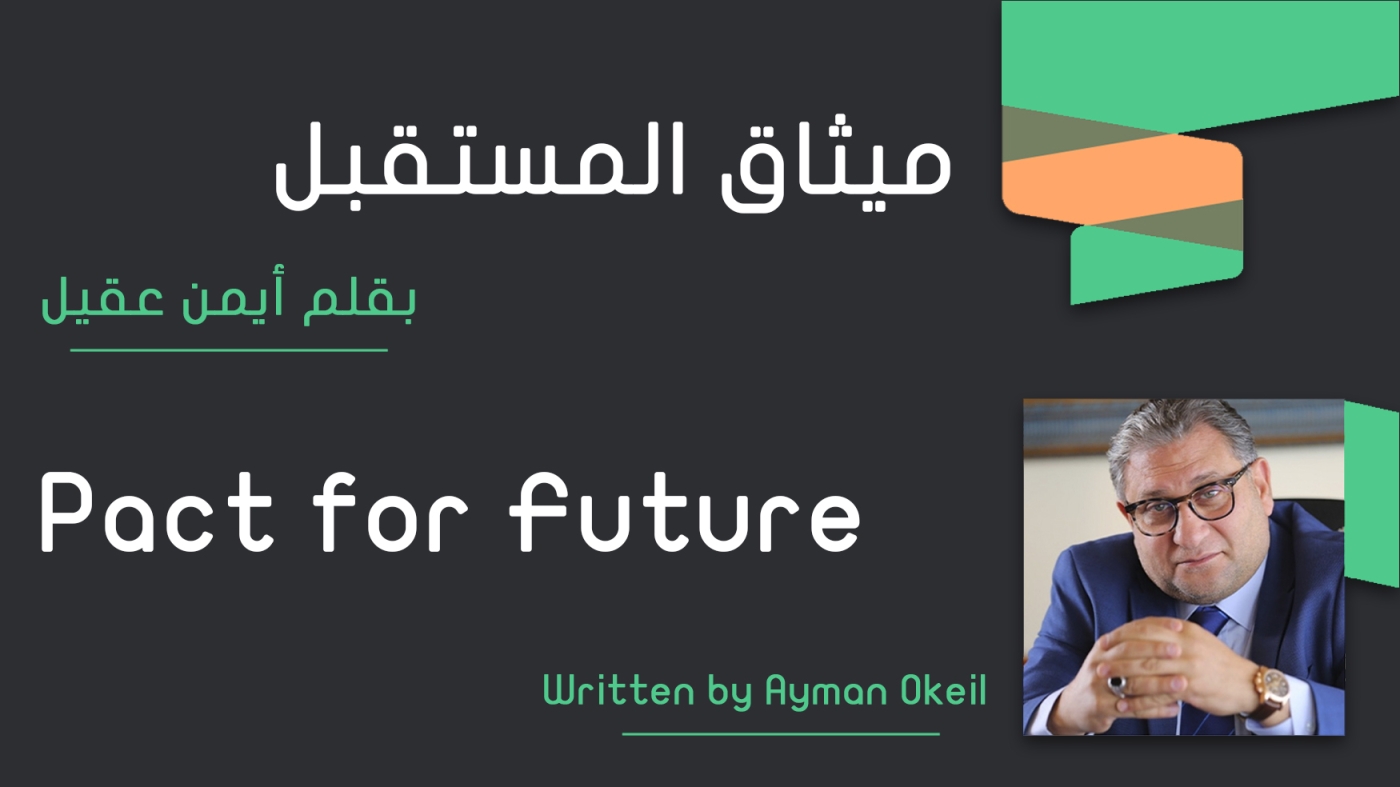By Ayman Okeil
UN Secretary-General Antonio Guterres described the summit that adopted the Pact for the Future on September 22, 2024, as an opportunity that comes once in a generation to reshape human history through international cooperation. From my perspective, while the Pact is creatively formulated with concise phrases that convey its purpose, it also reflects a sense of hope amid the harsh realities of wars, conflicts, and the decline of international law. This document consists of 66 pages in Arabic and 56 in English, encompassing significant aspirations. However, like all documents adopted by United Nations, this Pact risks becoming ineffective if it lacks binding obligations and fails to be implemented. Aspirations must be transformed into actionable practices on the ground.
The structure of the Pact includes a preamble, five main areas of focus, 56 specific procedures, and two annexes. It identifies various stakeholders for implementation, including governments, parliaments, civil society, international institutions, local authorities, private sector, and academic institutions. Preamble acknowledges that the world is undergoing profound transformations that impose existential and catastrophic risks. It emphasizes that the three pillars of United Nations – sustainable development, peace and security, and human rights – are of equal importance; one cannot be achieved without the others. The five areas of focus are: 1. Sustainable development and financing for development; 2. Strengthening international peace and security; 3. Supporting science, technology, and digital innovation; 4. Youth and future generations; and 5. Transformation in global governance. These areas will be supported by the 56 specific measures outlined in the Pact. The General Assembly is set to conduct a comprehensive review of these measures during its 83rd session through a high-level meeting of heads of state and government.
In my opinion, the content of the Pact extends the 2030 Agenda for Sustainable Development, primarily addressing future challenges such as poverty, environmental crises, and inequalities both between countries and within them, as well as challenges posed by digital technologies. The phrase “sustainable development” appears more than 190 times, while “human rights” is mentioned over 100 times. Additionally, Measure No. 14 in the section on international peace and security addresses the protection of all civilians in armed conflicts. The Pact also acknowledges the role of civil society, which is a positive aspect. However, it is concerning that the document is not binding, lacking mechanisms for enforceable implementation. Moreover, the Pact only marginally addresses critical issues such as interference in the internal affairs of countries. It could have linked such interferences to the impediments they create for the development processes in nations affected by foreign intervention.

